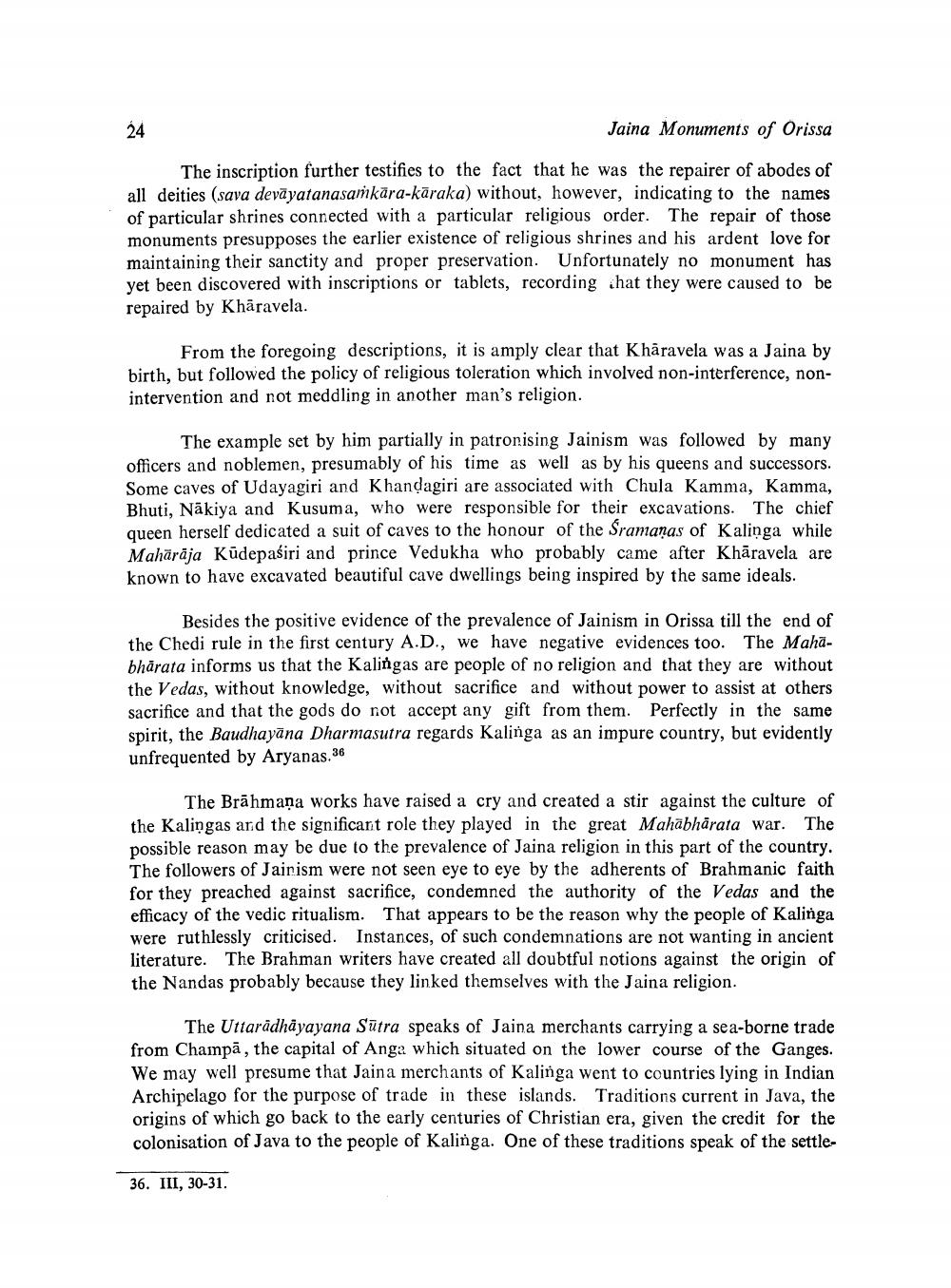________________
Jaina Monuments of Orissa
The inscription further testifies to the fact that he was the repairer of abodes of all deities (sava devāyatanasakära-kāraka) without, however, indicating to the names of particular shrines connected with a particular religious order. The repair of those monuments presupposes the earlier existence of religious shrines and his ardent love for maintaining their sanctity and proper preservation. Unfortunately no monument has yet been discovered with inscriptions or tablets, recording that they were caused to be repaired by Khāravela.
From the foregoing descriptions, it is amply clear that Khāravela was a Jaina by birth, but followed the policy of religious toleration which involved non-interference, nonintervention and not meddling in another man's religion.
The example set by him partially in patronising Jainism was followed by many officers and noblemen, presumably of his time as well as by his queens and successors. Some caves of Udayagiri and Khandagiri are associated with Chula Kamma, Kamma, Bhuti, Nākiya and Kusuma, who were responsible for their excavations. The chief queen herself dedicated a suit of caves to the honour of the Sramaņas of Kalinga while Mahārāja Kūdepasiri and prince Vedukha who probably came after Khāravela are known to have excavated beautiful cave dwellings being inspired by the same ideals.
Besides the positive evidence of the prevalence of Jainism in Orissa till the end of the Chedi rule in the first century A.D., we have negative evidences too. The Mahabhārata informs us that the Kalingas are people of no religion and that they are without the Vedas, without knowledge, without sacrifice and without power to assist at others sacrifice and that the gods do not accept any gift from them. Perfectly in the same spirit, the Baudhayāna Dharmasutra regards Kalinga as an impure country, but evidently unfrequented by Aryanas. 36
The Brāhmaṇa works have raised a cry and created a stir against the culture of the Kalingas and the significant role they played in the great Mahabharata war. The possible reason may be due to the prevalence of Jaina religion in this part of the country. The followers of Jainism were not seen eye to eye by the adherents of Brahmanic faith for they preached against sacrifice, condemned the authority of the Vedas and the efficacy of the vedic ritualism. That appears to be the reason why the people of Kalinga were ruthlessly criticised. Instances, of such condemnations are not wanting in ancient literature. The Brahman writers have created all doubtful notions against the origin of the Nandas probably because they linked themselves with the Jaina religion.
The Uttarādhāyayana Sūtra speaks of Jaina merchants carrying a sea-borne trade from Champā, the capital of Anga which situated on the lower course of the Ganges. We may well presume that Jaina merchants of Kalinga went to countries lying in Indian Archipelago for the purpose of trade in these islands. Traditions current in Java, the origins of which go back to the early centuries of Christian era, given the credit for the colonisation of Java to the people of Kalinga. One of these traditions speak of the settle
36. III, 30-31.




